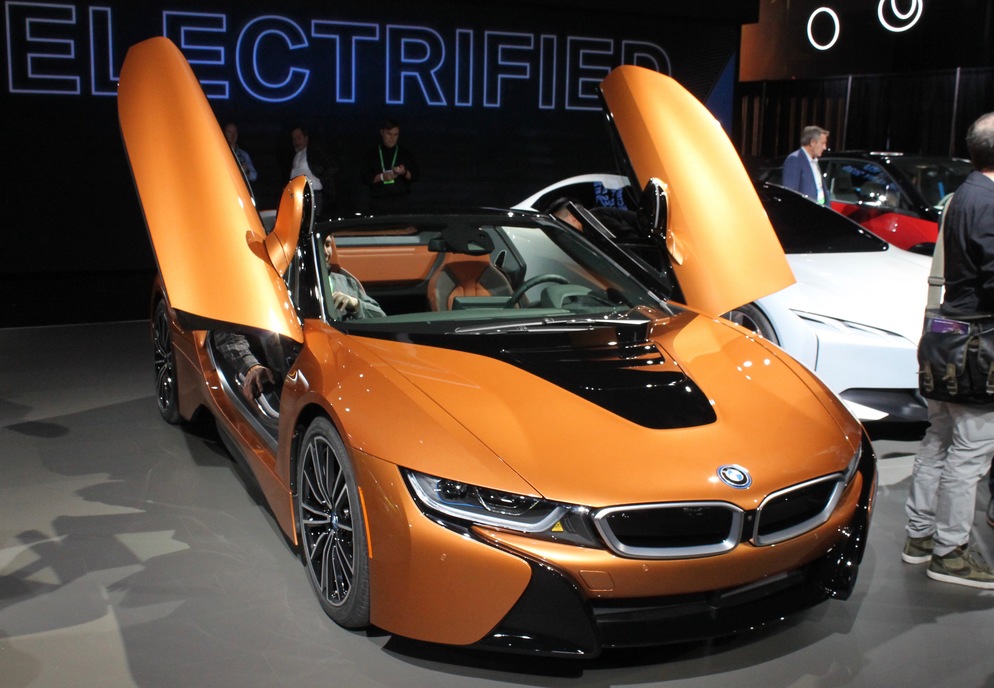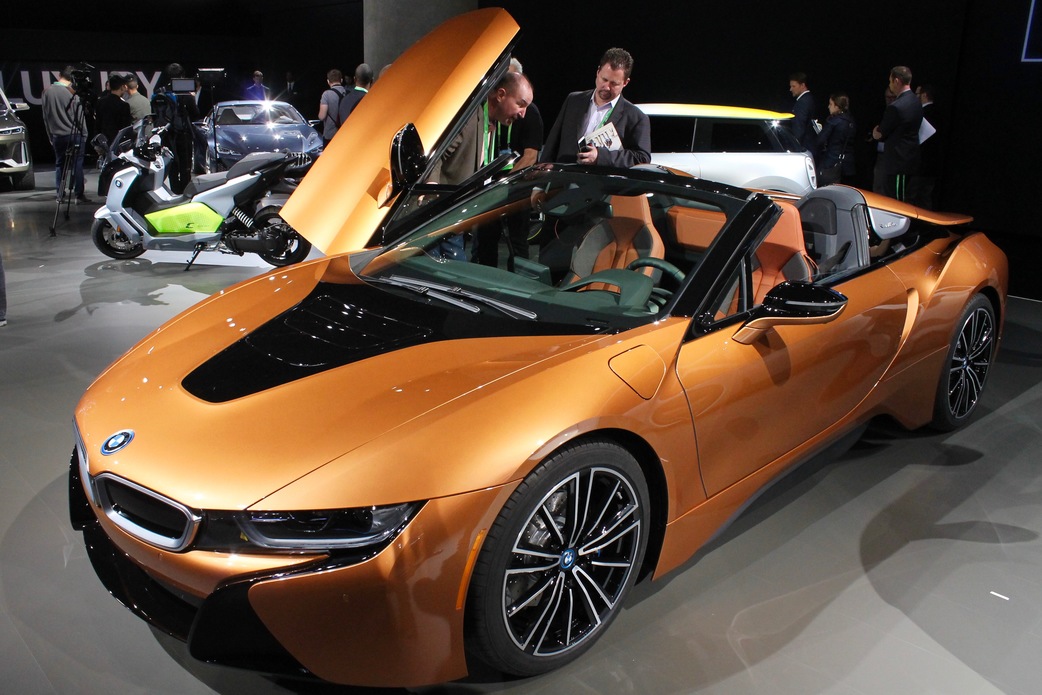It’s been in the works for years. So long in fact, that we thought it might never happen. BMW has finally introduced the topless variant of its plug-in hybrid i8 sports car at the annual Los Angeles Auto Show.
Designers preserved the i8’s striking silhouette while chopping off part of the roof. The newly acquired power-operated soft top opens or closes in 16 seconds, even at speeds of up to 31 mph. It folds vertically in a Z shape (the letter, not the car) to take up as little space as possible under a tonneau cover accented with model-specific “Roadster” emblems, lest you forget you’re driving a convertible. The Roadster looks just as futuristic as the coupe, which remains one of the most eye-catching models on the market even three years after its debut.
The i8 offers 3.5 cubic feet of trunk space between the front seats and the rear firewall and 4.7 cubes out back. Those numbers probably sound dismal, but 8.2 cubic feet of storage is a surprisingly high figure for a car like the i8. The trade-off is that the Roaster only offers space for two passengers. In comparison, the coupe adopts a more spacious 2+2 layout, though the rear seats are nearly useless unless you lug around small children on a regular basis. The rest of the cabin remains unchanged.
Weight is the main enemy of every convertible regardless of what form it takes. BMW did its best to keep it in check by manufacturing the elements that connect the roof mechanism to the body out of aluminum using a novel 3D-printing process. The frameless doors are made out of carbon fiber with an aluminum outer shell, and the windshield frame is made exclusively with carbon fiber. The i8 Roadster consequently tips the scale at 3,513 pounds, a figure which makes it 132 pounds heavier than its fixed-roof counterpart.
The i8 Roadster ushers in an updated version of the coupe’s plug-in hybrid powertrain. Its nerve center is a turbocharged, 1.5-liter three-cylinder engine that sends 228 horsepower and 236 pound-feet of torque to the rear wheels. It’s an evolution of the three-pot that powers the base Mini Hardtop and the entry-level 3 Series in Europe, among other models, and it shifts through a six-speed automatic transmission. On its own, it’s hardly impressive in a car with the i8’s pretensions. But BMW has a high-voltage trick up its sleeve.
An electric motor linked to an 11.6-kilowatt battery pack zaps the front axle into motion, bumping the i8’s total output to 369 hp — 12 more than last year, if you’re keeping track. The battery stores enough electricity to power the i8 on its own for up to 18 miles at no more than 75 mph when the driver engages eDrive mode. When the mid-mounted gasoline engine turns on, the Roadster becomes all-wheel drive and performs the benchmark zero-to-60-mph sprint in 4.4 seconds before going on to a top speed that’s electronically limited to 155 mph. BMW predicts its newest drop-top will return 70MPGe, though official figures aren’t available because the Environmental Protection Agency (EPA) hasn’t tested the car yet.
The coupe — which receives the same updated powertrain — and Roadster variants of the 2019 BMW i8 will begin arriving in showrooms in the spring of next year. Look for a pricing announcement before then.










